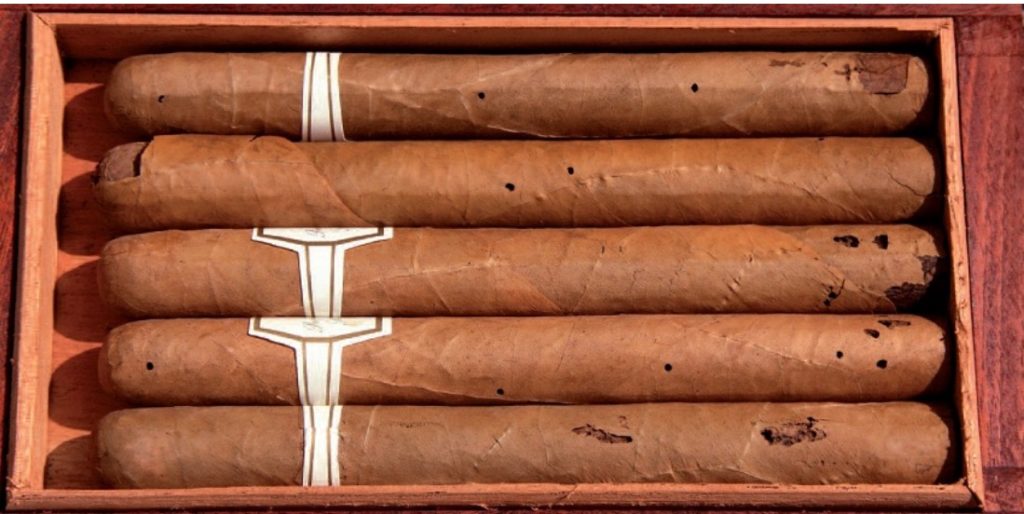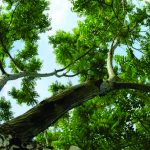
Buyer Be Aware!
Tuesday, January 14, 2020 Category: Cigar 101Of course all of us here at The Cigar Thief want you to purchase all of your cigars from us! But we know that every now and again you may wind up in another town, state or country; finding yourself shopping in a cigar store or smoke shop of some kind.
Most cigar retailers want to do the right thing for their customers. They know no one wants to buy a stale or over-humidified cigar.
I remember visiting a large chain of smoke shops to help them reset their cigar cabinets and add new brand selections. Whenever I entered a client’s store I immediately approached whatever type of fixture they had their cigars in to check on the Humidifcation device. As I opened the cabinet doors I gently felt one of the cigars that appeared to be discolored. It was also as hard as a rock.
It was then the store’s manager announced, “The humidifier machine is working”. He was right. The machine was running but after my inspection it appeared that there was no distilled water in the unit’s reservoir to create moisture! Needless to say, every cigar in the cabinet was unsmokable. It is times like this warn “Buyer Be Aware!”.
What to look for…
Be on the lookout for any kind of humidistat gauge to see that the humidity level is around 70% and don’t be alarmed if it’s between 68-70. If you notice the humidity level at over 73% be on the lookout for condensation underneath the cellophane wrappers. Over-humidification can cause moisture to collect under the cellophane which will then seep onto the outer leaf and ruin the cigar. Over humidification will also lead to extremely soft cigars that will be difficult to light up and ultimately be a real bad smoking experience.
Keeping cigars in an environment conducive to ongoing aging, proper humidification and temperature control should be very important to retailers.
We talk a lot about humidification. Did you know that temperature is equally important? It’s generally accepted that 70% humidity and 70 degrees Fahrenheit is the right ratio for premium cigars to be stored in. When I assisted retailers building cigar stores I emphatically stated that if they didn’t want to install air conditioning, they shouldn’t build a humidor room. When retailers had a wall of display cabinets to sell cigars, I would ask them if they had central A/C and did they use it. If they didn’t ,I made the same recommendation.
What most people don’t know is what can happen when the temperature in a cigar display case or walk in humidor exceeds 78-85 degrees Fahrenheit and humidification levels rise to over 75% for and extended period of time.
The answer: TOBACCO BEETLES!
What about tobacco beetles?
Virtually every premium cigar contains some trace of bug larvae. Most of time it’s so small you can’t even see it but its there. It doesn’t matter if it’s a $3 cigar or a $23 one. When you light up a cigar any trace of this is incinerated and doesn’t effect your smoking experience.
When temperatures get hot in cigar displays a retailer runs the risk of having those tiny bug eggs hatching; hatching into tobacco beetles. When they come to life their sole purpose is to eat tobacco then shit it out behind them and repeat the process. When they travel to the upper leaf they will bore tiny holes and tunnel to the surface. They can jump around like fleas and contaminate an entire cigar inventory very quickly. When this happens most retailers become alarmed and remove the effected cigars only to see additional product become infested soon thereafter.
If you see something like the picture below illustrates, walk away form the store. Also, be on the lookout for a kind of black dust in the bottom of boxes that’s left behind after the bugs have moved on. Again, Buyer Be Aware!
Beetles Example
Over the years I’ve purchase thousands of boxes of cigars from the worlds best manufacturers. On several occasions when I got my delivery I’d open a new box and see evidence of cigar beetles. Why? When cigars are shipped from other countries, they usually travel long distances for extended time through high climates before they ultimately reach a store. Some sit in containers on dock for weeks before they’re cleared by Customs officials.
As I’ve said, the vast amount of cigar sellers understand the importance of storing cigars properly. Don’t let a bad actor’s lack of concern about what they’re selling wind up ruining your purchase.
As a side note, many folks have reached out to me over the years to inquire why a particular cigar felt “hard” even though it was purchased from a reputable source where the cigars were properly stored. How could a cigar being kept in a well regulated humidor be hard if it’s obviously not stale?
What’s the takeaway?
If you find yourself in a store where the cigars are kept in a perfect environment; you may notice some cigars appear hard to the touch. A hard cigar is not necessarily a stale cigar. The answer is that particular cigar is jammed packed with tobacco as opposed to many others. Partagas Black Label and La Gloria Cubana Series R are two examples. They draw well, burn slow and have very complex flavors. While I can’t guarantee that every “hard” cigar purchased from fine stores are good ones. That after all depends on your taste preferences. At least you know why it may appear hard.
Related Posts:
Ask “Doc” Harold #2
Spanish Cedar, Spanish Cedar, Spanish Cedar. You’ve all been told...
I couldn’t resist!
While I’m an avid fan of of single malt whiskeys,...




